|
|
|
|
|
|
|
|
Visit India |
|
|
|
|
|
|
|
|
| Ranthambhore Tiger Reserve |
|
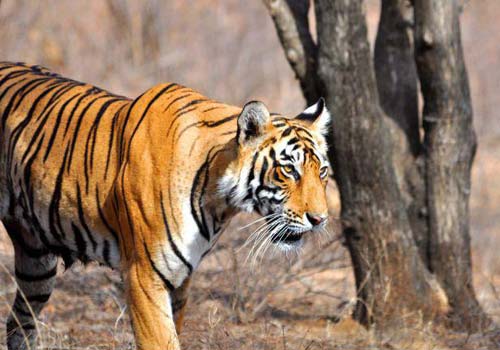 Ranthambhore Tiger Reserve, before a princely game conserve is the scene where the celebrated Indian Tiger is best seen. Ranthambhore Tiger Reserve lies on the junction of Aravali and Vindhyas just 14 Kms from Sawai Madhopur
in Eastern
Rajasthan. Ranthambhore Tiger Reserve, before a princely game conserve is the scene where the celebrated Indian Tiger is best seen. Ranthambhore Tiger Reserve lies on the junction of Aravali and Vindhyas just 14 Kms from Sawai Madhopur
in Eastern
Rajasthan.
The rugged park terrain alternates between dry deciduous forest, open grassy meadow, dotted by several lakes and rivers that are only made passable by rough roads built and maintained by the Forest Service.The tiger is not the only attraction at Ranthambhore although it is the one park resident that people come to see. A variety of birds including Owlets, the ubiquitous Langur (monkey), Leopard, Caracal, Hyena, Jackal, Jungle Cat, marsh Crocodiles, Wild Boar, Bears and various species of Deer are the other attractions.
The main food source for the tiger is the swamp deer like Barasinsga and on occasion the wild buffalo and also wild boar etc. If you wish to stay near the park, the facilities on offer are superb. The park gates open a half hour before sunrise and close half hour after sunset. The timings are vigorously imposed and no exceptions are made to this rule.
|
|
|
Keoladeo Ghana National Park |
|
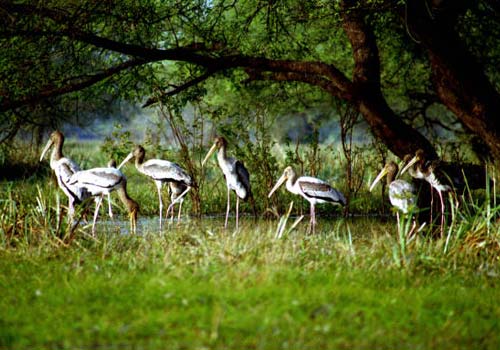 This magnificent bird haven in actual came into being paradoxically as a duck shooting preserve for Maharaja Suraj Mull of Bharatpur. He transformed the shallow depression formed by the confluence of River Gambhir and River Banganga into a reservoir by damming the rainwater in monsoons. Flooding of water created shallow wetland ecosystem causing it to be a perfect habitat for an astounding variety of birds. The park that was a hunting preserve for the Maharaja and the British continued to be so till 1964, after which the hunting was banned. This magnificent bird haven in actual came into being paradoxically as a duck shooting preserve for Maharaja Suraj Mull of Bharatpur. He transformed the shallow depression formed by the confluence of River Gambhir and River Banganga into a reservoir by damming the rainwater in monsoons. Flooding of water created shallow wetland ecosystem causing it to be a perfect habitat for an astounding variety of birds. The park that was a hunting preserve for the Maharaja and the British continued to be so till 1964, after which the hunting was banned.
The Park opens from sunrise to sunset around the year. The ticket is Rs 200 per foreign visitor and Rs 25 for Indian visitor. Vehicles are permitted upto Shanti Kutir about 1.7 kilometres inside at Rs 50 per vehicle. After this you can choose to walk, bicycle, or go by cycle rickshaw, Tonga or boat when the water level is high. The cycle rickshaw wallah’s displaying yellow plate meaning authorised double up as guides also carry binoculars. Hotels do supply packed lunches and you can get a bite at a canteen on the second gate and even at Forest Lodge.
|
|
|
Mount Abu Wildlife Sanctuary |
|
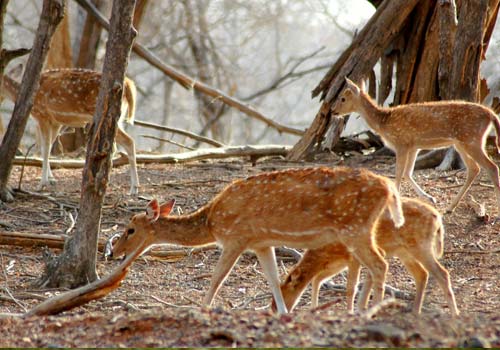 The sanctuary comprises the oldest mountain ranges - The Aravali. It was declared as a Wildlife Sanctuary in 1960. Apart from having several sightseeing places this sanctuary is a draw for nature lovers as it has great potential for Eco-tourism, In shape this sanctuary is long and narrow but the top spreads out into a picturesque plateau which is about 19 km. is length and 5-8 km. in breadth. The sanctuary comprises the oldest mountain ranges - The Aravali. It was declared as a Wildlife Sanctuary in 1960. Apart from having several sightseeing places this sanctuary is a draw for nature lovers as it has great potential for Eco-tourism, In shape this sanctuary is long and narrow but the top spreads out into a picturesque plateau which is about 19 km. is length and 5-8 km. in breadth.
These forests consist of 112 plant families with 449 genera and 820 species. Of these, 663 species are dicots while 157 species are monocots. Mount Abu is the only place in Rajasthan where one can observe a variety of orchids. The place is also rich in bryophytes and algae. Three species of wild roses and 16 species of feras some of which are quite rare have also been reported from here. The South- West part of the Sanctuary is rich in bamboo forests.
|
|
|
Desert National Park |
|
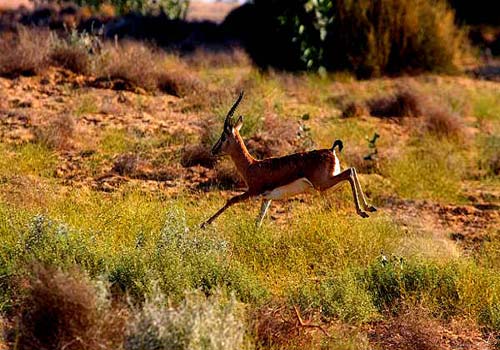 The Desert National Park is an excellent example of the ecosystem of the Thar Desert and its rich fauna. The Sudashri forest post is the most ideal place for observing wildlife in the Desert National Park. Sand dunes form less than 20 percent of the Park, which consists of craggy rocks, pavements and compact salt lake bottoms, intermedial areas and fixed dunes. The Desert National Park is an excellent example of the ecosystem of the Thar Desert and its rich fauna. The Sudashri forest post is the most ideal place for observing wildlife in the Desert National Park. Sand dunes form less than 20 percent of the Park, which consists of craggy rocks, pavements and compact salt lake bottoms, intermedial areas and fixed dunes.
Its inhabitants include the blackbuck, chinkara, wolf, Indian fox, desert fox, hare and desert cat. Flights of sandfrouse start coming to waterholes from sunrise onwards. One also hear the morning call of the grey partridge. Blue tailed and green bee-eaters, drongos, common and bush quail and Indian rollers are birds, which are commonly found around waterholes. the park is also home to the great Indian Bustard which is peril of extinction.
|
|
| Sariska Tiger Reserve |
|
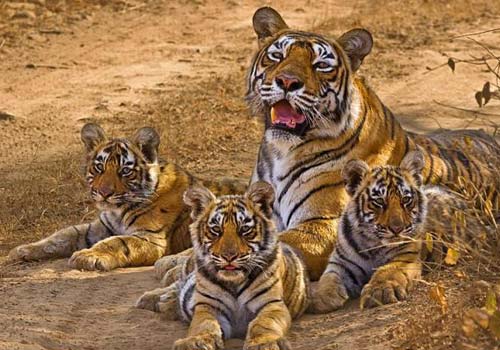 Sariska Tiger Reserve is situated only 200 km from Delhi and 107 kms from Jaipur. Although larger than Ranthambor, it is less commercialised and has less tigers but a similar topography. Sariska Tiger Reserve is situated only 200 km from Delhi and 107 kms from Jaipur. Although larger than Ranthambor, it is less commercialised and has less tigers but a similar topography.
The landscape of Sariska comprises of hills and narrow valleys of the Aravali hill range. The topography of Sariska supports scrub-thorn arid forests, dry deciduous forests, rocks and grasses. The broad range of wildlife here is a wonderful example of ecological adoption and tolerance, for the climate here is variable as well as erratic.
The park is home to numerous carnivores including Leopard, Wild Dog, Jungle Cat, Civets Hyena, Jackal, and Tiger. These feed on species such as Sambar, Chital, Nilgai, Chausingha, Wild Boar and Langur. Sariska is also well known for its large population of Rhesus Monkeys, which are found around Talvriksh.
|
|
|
|
|
Scroll
|
|
|
|
 |
|
|
